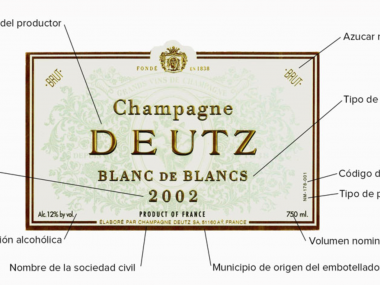As wine drinkers, we can overlook some of the defects of wine. However, our senses can be great allies if we want to identify them. Here we share with you the most common defects and how you can detect them with your nose:
1.Oxidized wine
Oxidized wine refers to contamination caused by excessive exposure to oxygen, just as it happens when you leave an apple uncapped and it turns brown. The oxidation of wine is the most common fault we can find.
It is easy to identify oxidation because oxidized wines lose their brightness, both in color and flavor. In red wines, deep reds become brown-orange and have a strange note of vinegar and apple.
White wines are much more susceptible to oxidation than red wines, because the high concentration of tannins in red wines serves to prevent it.
2. Sulfur compounds
Sulfur is added in small amounts to almost all wine to stabilize it. In the case of natural wines, it does not have these additions. The most frequent manifestation of a defect related to sulphur is called mercaptan. Sulfur compounds smell of smoke like a lit match or a cooked cabbage.
Most of these odors burn in about 15-20 minutes after opening a bottle. If you notice rotten egg, flatulence, burnt gum or cooked garlic smells in your wine after decanting it for a while, then you probably have a mercaptan problem.
3. Secondary Fermentation
We can identify secondary fermentation when we see small bubbles in a wine that is not sparkling, that is, a wine where there should be none, especially in a young bottle of red wine. Besides the bubbles, the wines usually smell of yeast.
Bubbles usually occur by accident when residual sugar is bottled with the wine, resulting in double fermentation. This occurs more frequently in low intervention winemaking when no sulfites are added.
4. Cooked wine
This defect refers to when a wine is ruined due to excessive exposure to heat. As for the smell we can detect in these wines, it will be similar to sweet jam or a reduction sauce.
At the same time, as heat damage usually compromises the seal of the bottle, as heat pushes the cork out, it can also produce oxidation.
5. Lightning strike
Wine can be damaged by excessive exposure to radiation, usually UV light. This is usually generated when a wine is left in the sun or near a window for a long time. This occurs more often with delicate white wines and smells like a wet wool sweater.
6. Bacterial stains
During the fermentation of the wine, besides the yeast, many microbes can be found. In a reduced amount, they can add complexity to the wine, but if this is exceeded, it is considered a defect, which releases several aromas. If when you smell the wine you perceive fungus or even straw, this may be a sign that the microbes have been overproduced.






